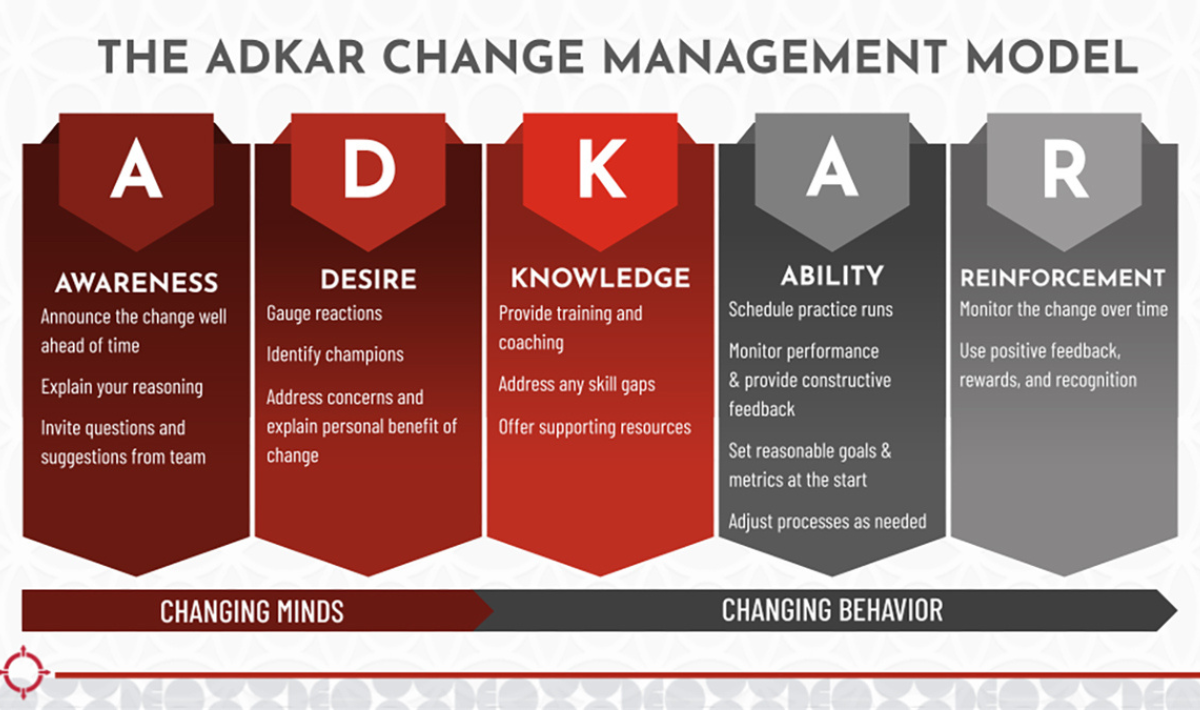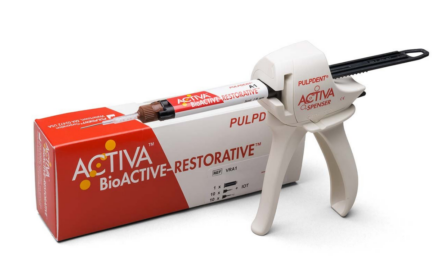The framework needed to successfully roll out a new system or process in the dental practice.
By Jess Pare, DEO
Mastering critical systems implementation is a crucial aspect of modern dental management. So often, the office manager is the individual expected to roll out changes in processes, systems, technology, and more to team members, but rarely are they trained on how to do this well.
What we know is that it requires a deep understanding of the psychology of change and effective communication techniques to successfully roll out new systems in a dental practice because this is about getting humans to change behavior. If you’ve ever tried to change your own behavior (i.e. install a new fitness habit or morning routine), you know just how difficult this can be!
In the following article, we will explore the ADKAR change management model and provide practical strategies for office managers to navigate the implementation process. By the end of this guide, you will have the knowledge and tools to lead your team through change and achieve total momentum.
The ADKAR Change Management Model
The ADKAR change management model is a powerful framework that helps office managers navigate the process of implementing critical systems in their practice. ADKAR stands for Awareness, Desire, Knowledge, Ability, and Reinforcement – the five stages necessary for successful change. Let’s delve into each stage in detail.
Awareness: Making the change known. The first stage of the ADKAR model is awareness. It is essential to announce the change well in advance, providing ample time for team members to process their emotions and concerns. During this stage, explain the reasoning behind the change and its expected benefits. Encourage team members to ask questions and make suggestions, creating an open and transparent communication environment.
Desire: Motivating the team. After creating awareness, the next step is to generate desire among team members to embrace the change. Gauge their reactions and identify champions who are already or will be supportive of the change. Address any concerns or resistance that may arise and highlight the personal benefits of the change. By involving team members in the decision-making process and recognizing their potential contributions, you can increase their motivation to adopt the new systems.
Knowledge: Providing the tools and training. Once team members are aware of the change and motivated to embrace it, it is essential to equip them with the necessary knowledge and skills. Provide training and coaching to ensure that they understand the expectations and can effectively implement the new systems. Additionally, offer supporting resources such as checklists, standard operating procedures (SOPs), and quick reference guides to facilitate their learning process.
Ability: Building competence and confidence. The ability stage focuses on building team members’ competence and confidence in executing the change. Encourage practice and provide opportunities for team members to apply their knowledge in a safe and supportive environment. Monitor their performance, provide constructive feedback, and set reasonable goals and metrics. Adjust processes as needed based on their feedback and experiences.
Reinforcement: Sustaining the change. The final stage of the ADKAR model is reinforcement. It involves reinforcing the change and ensuring its long-term sustainability. Regularly remind team members of the change, monitor its progress, and provide positive feedback and recognition for their efforts. By reinforcing the change, you create a culture of continuous improvement and encourage team members to embrace future changes with confidence.
Implementing critical dental systems
Now that we have explored the ADKAR change management model, let’s apply it specifically to the implementation of critical dental systems. Critical dental systems are essential for the growth, scalability, and optimization of a dental practice. The following sections outline key considerations and strategies for successfully implementing critical dental systems.
Choosing the right systems. Before implementing critical dental systems, it is crucial to identify the most appropriate systems for your practice’s needs. Consider the critical dental systems recommended by experts, such as practice management systems, appointment scheduling systems, patient communication systems, and billing systems. Assess your practice’s specific requirements and consult with industry professionals to select the systems that will best support your practice’s growth and efficiency.
Communicating the change. Effective communication is vital throughout the implementation process. Clearly communicate the reasons behind the change and the benefits it will bring to the practice and team members. Use various channels, such as team meetings, emails, and memos, to ensure that everyone is well-informed. Encourage questions and feedback to address any concerns or resistance.
Training and support. Provide comprehensive training and ongoing support to ensure the successful adoption of the new systems. Develop training modules, conduct workshops, and provide hands-on guidance to familiarize team members with the systems’ functionalities. Offer ongoing support, such as help desks, to address any issues or questions that may arise during the implementation phase. Regular training sessions and refresher courses can further enhance competence and confidence in using the new systems.
Managing resistance. Resistance to change is common and can hinder the successful implementation of critical dental systems. Proactively address resistance by actively listening to team members’ concerns and providing transparent explanations. Involve team members in the decision-making process and emphasize the benefits of the change. Encourage open communication and create a safe space for team members to express their thoughts and feelings.
Monitoring and evaluation. Regularly monitor the implementation progress and evaluate the effectiveness of the new systems. Establish key performance indicators (KPIs) to measure the impact of the change on practice efficiency, patient satisfaction, and team productivity. Analyze the data collected and make adjustments as necessary to optimize the systems’ performance.
Celebrating success. Recognize and celebrate the achievements and milestones reached during the implementation process. Acknowledge team members’ efforts and contributions, highlighting their commitment to embracing change. This positive reinforcement fosters a culture of continuous improvement and motivates team members to adapt to future changes.
Mastering critical systems implementation is a key skill for modern dental managers. By following the ADKAR change management model and leveraging the strategies outlined in this guide, you can successfully implement critical dental systems in your practice. Remember to create awareness, generate desire, provide knowledge and training, build competence and confidence, and reinforce the change. By doing so, you will lead your team through change with confidence and achieve total momentum in your practice.





